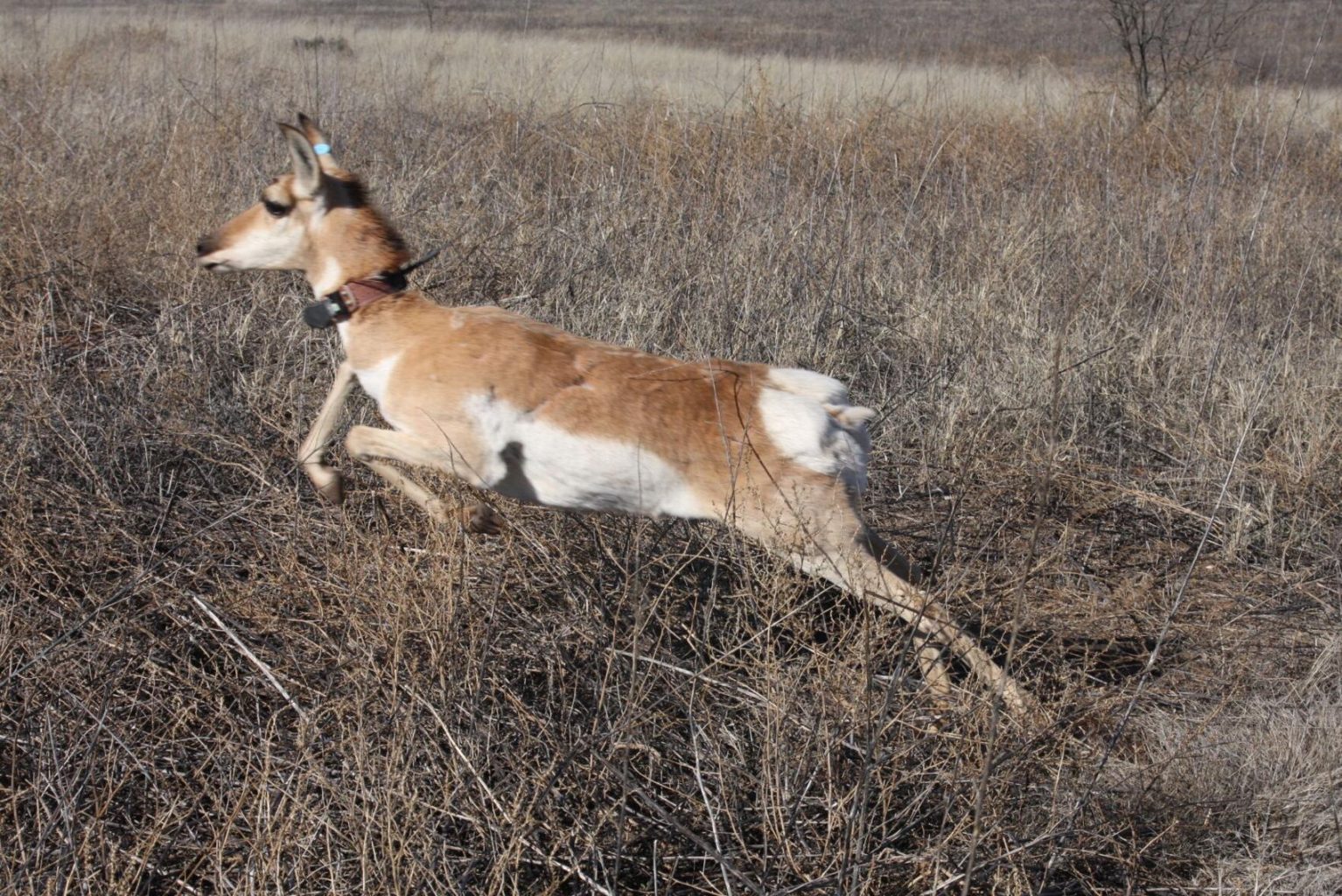
Pronghorn antelopes released in Southern Arizona wildlife refuge
The Arizona Game and Fish Department released 30 pronghorn antelopes into a field of grass about 65 miles southwest of Tucson on Tuesday to beef up the population at Buenos Aires National Wildlife Refuge.
The new additions will more than double the size of the existing herd, which numbered at about two dozen animals after years of trying to reestablish the once-common species there.
“There used to be hundreds of them in the Altar Valley” before the native population died out, said Game and Fish spokesman Mark Hart.
The five bucks and 25 does set free on Tuesday were collected from a much larger group of about 200 animals in the San Bernardino Valley northeast of Douglas.
Two of the bucks and eight of the does are now wearing tracking collars so game officials can see where they go and how they use the landscape.
Hart said the collars are designed to last for two or three years and then drop off automatically when their batteries die.

The transplanted animals will most likely live out their lives within the 117,464-acre refuge north of Sasabe, but “it’s kind of up to them,” he said.
To make the place safer and more appealing to pronghorns and other wildlife, the volunteer stewardship group Friends of Buenos Aires National Wildlife Refuge has removed some 200 miles of unused fencing from the refuge over the years, Hart said.
The refuge’s newest residents were captured in nets fired from a low-flying helicopter, then flown to a staging area along state Route 80 south of the Chiricahua Mountains, about 10 miles west of the Arizona-New Mexico border.
The animals were blindfolded to keep them calm, examined and then loaded into trailers for the roughly 200-mile drive to the Altar Valley.
Bad weather delayed the capture, Hart said. “We had to shut down operations on Monday because it started to snow of all things.”
Despite their common name, pronghorn antelopes aren’t really antelopes at all. They are much more closely related to giraffes and okapis than to the true antelopes and gazelles of Africa and Asia, though they do fill the same grassland niche.
Tens of millions of pronghorns once roamed the vast plains of North America, but by the 1920s, their numbers had been reduced to less than 15,000 by rampant hunting and habitat loss.
The overall population has since rebounded to about 1 million, thanks to widespread conservation efforts, though three subspecies are still at risk of extinction, including the desert-dwelling Sonoran pronghorn found along the U.S.-Mexico border in southwestern Arizona.
The more common variety of pronghorn, like those released on Tuesday, are mostly found across the northern third of the state, though southeastern Arizona is now home to approximately 600 of the animals.
One of the most successful repopulation efforts to date is in the area around Sonoita and Elgin, where the population has gone from fewer than 100 to more than 300 pronghorns.
Hart said additional animals were moved to the area from New Mexico and elsewhere in Arizona to improve the genetic mix. At the same time, Game and Fish partnered with local landowners to improve the habitat by installing new water holes and tanks, removing mesquite trees to open up the grasslands and modifying more than 100 miles of barbed wire fencing so pronghorns can squeeze underneath them without getting snagged.
Arizona does allow hunters to take about 500-700 pronghorns each year from some parts of the state, but not at Buenos Aires National Wildlife Refuge.
“The herd is too small to be hunted there,” Hart said.
Originally appeared :
